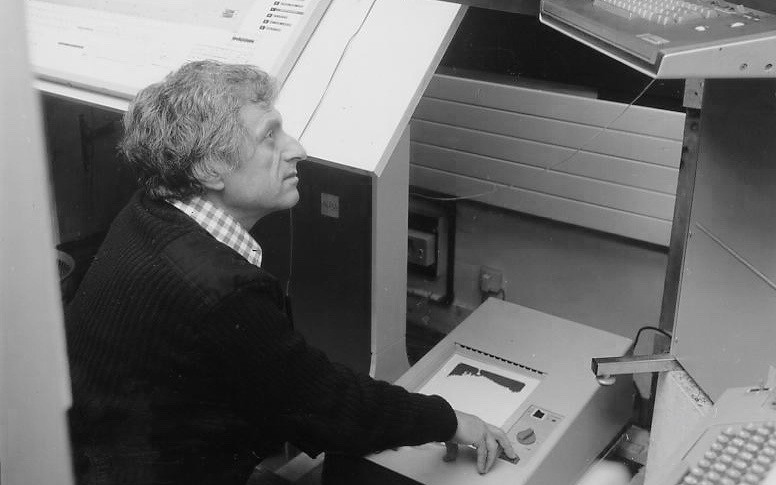Echo Spaces // Iannis Xenakis

You could probably write a multi-volume book just on Iannis Xenakis' wartime experience, so I'll try to keep this as concise as possible. Born in Romania in 1922 to Greek parents, Xenakis was an architect, engineer and composer. He was also among the 20th Century's most forward-thinking.
His disciplines were often interlinked. Xenakis created compositions for different spaces and designed spaces for specific compositions. In 1977 he also created the UPIC, a programme which could, "translate graphic images into musical results". With this tool, Xenakis would use his architectural drawings as the basis of some of his compositions.
His architectural studies began in Greece, where he also studied the laws of harmony and counterpoint. Despite finishing his exams, Xenakis' education was interrupted by the onset of WWII and the preceding Greco-Italian War. WWII left Xenakis with a scar across the side of his face and blind in his left eye. After Greece was liberated from Axis forces in 1944, Churchill ordered allied troops to fight dissidents to reinstate the Greek monarchy. As a communist resistance member, Xenakis engaged in fighting British tanks, whereupon he was hit with a blast of shrapnel. The fact he survived has been described as a miracle by some.
In 1947 the Greek government began arresting former left-wing resistance members, prompting Xenakis to flee to Paris. While there, he was sentenced to death in Greece, a charge which was later commuted to ten years in prison and only dropped in 1974 after a regime change. Leaving Greece was a painful experience for Xenakis, and he expressed his discomfort at leaving the country he had fought for, and the comrades he had fought with behind.
"I felt I was in debt to them and that I had to repay that debt. And I felt I had a mission. I had to do something important to regain the right to live. It wasn't just a question of music—it was something much more significant."
Xenakis died in 2001 at his home in Paris aged 78, after lapsing into a coma. 16 years on from his death, his music is still considered some of the most visceral and exciting ever created. His compositions tower above the listener; building colossal, abstract structures right before your eyes, then letting them collapse with drama and intensity, so the process can begin anew.
To commemorate his influence, we wrote about three of our favourite works from his discography.
###1 Electro-Acoustic Music (1970)
Given it's conceptual breadth and contemporary sound, it's impressive to read that a piece of music like Xenakis’ Electro-Acoustic Music was released in 1970. But it's frankly ridiculous to read that these pieces were actually composed between 1957 and 1962. Across 45 minutes, Xenakis conjures Lovecraftian drones, tumbling, broken crockery sound-design and thunderous, concorde jet-engine assaults. The result is wildly adventurous and meticulous in its execution; a truly future-gazing vision of what music could look like, even by today’s standards.
###2 Persepolis (1970)
One of Xenakis' key concepts throughout his career was the 'Polytope'. In Geometry, a polytope is any shape with flat sides. But in Xenakis' musical universe, this word was used almost literally: poly- meaning "many" and -tope meaning "sites". Xenakis' polytopes were multimedia explorations of sound, space and science. They were essentially installations on a mass-scale, with everything from lasers to mirrors, flaunting his knowledge of architecture. In 1971, Xenakis was commissioned to write a piece commemorating the 2500th anniversary of Iran's founding. Like all of the polytopes, they centre on a particular geography, this time on the great ancient capital of Persepolis.
###3 Pléiades (1979)
Pléiades stands out among Xenakis’ discography for me. Written entirely for percussive instruments, Xenakis began to experiment with spatialisation - even positioning performers amongst the audience. He also had a special instrument commissioned for the piece, Sixxen, which is made up of 19 aluminium or steel and bronze bars and played with hammers. Sonically, Pléiades is a teeming forest of dense polyrhythms and booming subatomic hits. At times Xenakis’ drums trickle like light rainfall, at others barraging the listener with ferocity, like being caught in the eye of the storm.
- Published
- Oct 7, 2017
- Credits
- Words by Stray Landings
